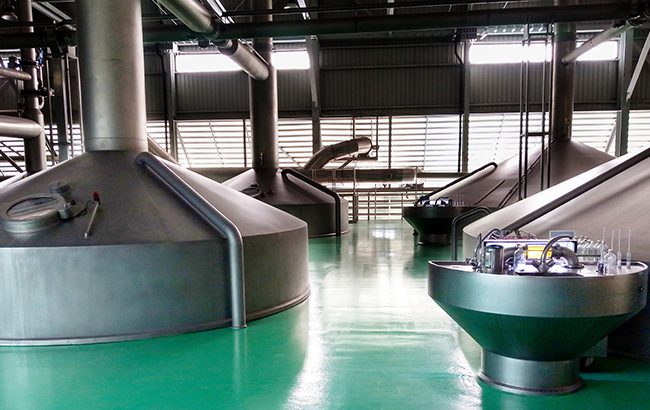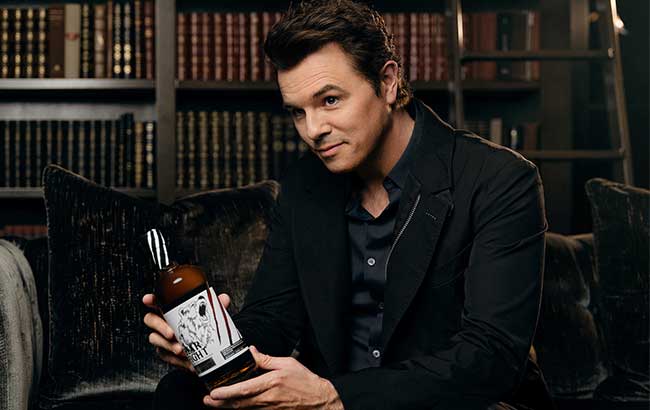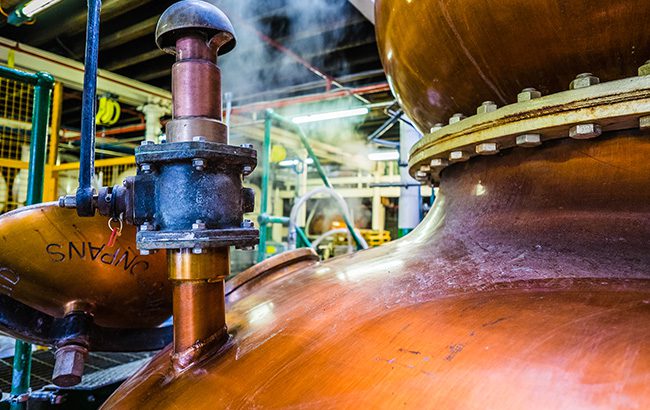This website uses cookies so that we can provide you with the best user experience possible. Cookie information is stored in your browser and performs functions such as recognising you when you return to our website and helping our team to understand which sections of the website you find most interesting and useful.
Contract thriller: third-party spirits
By Alice BrookerThe days of third-party producers being a taboo secret seem to be over, as many in the industry are happy to admit they count on them for their skills, and the ability to help brands scale up quickly.

*This feature was first published in the March issue of The Spirits Business magazine.
“I believe we exist to empower entrepreneurs to go out there in an industry that’s full of barriers and knock them down,” explains Anthony Moniello, co‐CEO of North Carolina–based third‐party spirits producer Next Century Spirits.
Third‐party producers are considered by some to be the backbone of the craft spirits industry, all the while carrying out their work behind the scenes. Yet while their role in supporting brands remains crucial, the spotlight is rarely cast on them.
“We describe a third‐party producer as a company that takes all of the production worries away from brands, allowing them to concentrate on sales and marketing to increase awareness,” Paul Miller, CEO of Wales’s Cardiff Distillery, puts it.
“It allows easier, more affordable access into the industry, with limited capital investment and licensing.”
A third‐party producer will have a number of brands under its wing, with the responsibility of crafting spirits for them as they request.
“Part of the business is creating brands for other people – we have 71 customers we create custom spirits for,” explains Moniello.
“This is not mass production. This is truly a customised creation for people. We don’t distil ourselves, we source liquids then process them through our technology to create custom flavour profiles.”
But third‐party producers’ involvement with other brands does not limit their freedom to create spirits themselves: Next Century Spirits essentially works two jobs, not just innovating for its 71 customers, but also for itself. The business produces Bear Fight whiskey in collaboration with Family Guy creator Seth MacFarlane.

The range of brands a third‐party producer supports can also be broad, from craft to super‐premium spirits.
Matt Krusemark, vice-president of distilling solutions sales at MGP Ingredients, headquartered in Kansas, US, explains that producers such as his “are necessary to support the business needs of distillers at all stages of spirits production”.
“We serve distillers of all sizes, from fledgling crafts to multinational organisations. Their needs often are very different: new distilleries awaiting maturation of their first batch of whiskey may need supply to generate income before they can bottle their own, and large producers may require spirits in significant quantities to ensure they can meet production goals. Others may want a specific flavour profile from MGP to use as the basis for their own branded spirit.”
One issue third‐party producers have, or have had in the past, it may seem, is the brands they manage coming under fire for a lack of transparency, as some shy away from their association with the bigger producers in an attempt to retain a small, independent, and craft image.
Natalie Wallis, group commercial manager for Alcohols Limited in Oldbury, near Birmingham in the UK, says: “There’s a lot of debate about whether we are good or bad. I don’t think there should be any criticism for using a third‐party distiller. There are an awful lot of benefits.
“In any industry, there’s a lot of marketing, which may not be as transparent as perhaps it ought to be. From our perspective, we like to be as open and transparent as we can be. But I understand from a marketing perspective, that there may be reasons that a brand owner doesn’t wish to disclose that they’re using a third party.”
Meanwhile, other third‐party producers recognise that their role was once taboo for brands, but this is less of an issue now. “I believe the taboo around third‐party contracting and sourcing has declined massively over the years, because as people begin to tell the truth to their consumers, they start to realise, ‘Oh, everyone’s done it’,” explains Moniello.
He spent nine years with Diageo before joining Next Century Spirits in 2021, with a leadership team made up of representatives from Pernod Ricard, Beam Suntory, and more.
“There’s contract distilling for the biggest companies to the smallest companies,” he continues. “It is a part of the industry and, frankly, I think it’s way less taboo now than it has ever been because some of your favourite brands wouldn’t exist today without contract distilling. Quite frankly, small brands that do well can’t scale up without contract distilling; it takes time to build a distillery. I won’t name other brands [with third‐party producers] because that would probably get me in trouble with every company I’ve worked for.”
Krusemark emphasises that this is a problem of the past – a concern from “several years ago”, as today’s consumers are “better‐educated” about how the industry works. “Many of our contract‐distilling customers these days proudly state that MGP is their supplier,” he says.

Global trends
One benefit of third‐party spirits production is the ability to see global industry trends from higher up in the chain. With Alcohols Limited servicing between 500 and 600 international brands, its view of spirits trends is expansive.
“We do see demand ebbing and flowing. We’re certainly seeing more demand coming from the States for British products; there have been a lot of successful brands like [gin brand] Highclere Castle over in the States,” says Wallis. “That’s starting to whet the appetite of some potential brand owners that want to get into the gin side of things and have a British product as well.”
The return of vodkas, as well as a boost in demand for rum and flavoured vodka, has also been noticed by Alcohols Limited, according to Wallis. Meanwhile, both MGP Ingredients and Cardiff Distillery have witnessed a rise in demand for ready-to-drink products, with the latter seeing five to 10 enquiries a week for canned products, including low and-no serves.
Aside from Bear Fight, Next Century Spirits also produces two other whiskey brands: Creek Water and TruthTeller, as well as the brands it creates as a third‐party producer.
“Even small US distilleries that can’t get traction here call me to say, ‘help me in the US because I’m selling 10,000 cases in Asia, but I can’t sell anything here, and my distillery is in upstate New York’.
“I would say the promiscuous Bourbon consumer is what drove the whiskey category in the US over the past 15 years. That’s now global – a global promiscuous consumer.”
Finally, China’s like for higher‐proof alcohol, exemplified in the popularity of spirits such as baijiu in the country, filters into its requirements for American whiskey, as Moniello has seen “a particularly high demand for high‐proof alcohol” generally, but also in regards to American whiskey.
“We get calls about 100‐proof, 120‐proof [50% ABV‐60% ABV] whiskeys now,” he explains. “That’s particularly surprising. China is a place where a lot of high‐proof alcohol wins the day.”
While the taboo surrounding third‐party spirits producers has been declared nonexistent by some, it can be seen that the multi‐purpose giants serve an extensive range of benefits to the industry.
Not only do the businesses open the doors for brands starting out, and in need of scaling, bringing “people’s dreams and brands alive” in doing so, according to Wallis, but the producers are also relevant for tracking global trends in the spirits industry – a much needed tracker as consumers keenly quench their thirst in a post‐pandemic world.

